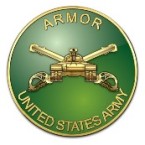Heartland
Posts: 105
Joined: 9/20/2000
From: Karlstad, Värmland, Sweden, Europe
Status: offline

|
I don't think it would have been healthy for Russians to fudge internal reports. Propaganda is one thing, internal technical reports another. Also, the absolutely miserable (make that miserable reliability of the King Tiger is well documented, so I hardly see how this can be disputed.
What I do find interesting, and quite surprising, are yet another set of internal reports from the Kubuinka testing ground (fall '44) which are translated at http://history.vif2.ru/library/weapons7.html for those interested. It states that the King Tiger had worse armor compared to the Tiger I and Panther, due to very poor armour quality at this stage in the war. Quote from the translation:
"1. The quality of armor on the "Tiger-B" tank, in comparison with the armor on the "Tiger-I," and "Panther," tanks, as well as early production "Ferdinand" self-propelled gun, has sharply deteriorated. The first individual impacts caused cracks and spalling in the armor of the "Tiger-B" tank. Groups of shell impacts (3-4 shells) caused large-scale spalling and fractures in the armor.
2. Weak weld seams appeared characteristic of all hull and turret joints. Despite careful workmanship, the seams held up to shell impacts significantly worse than they did in analogous constructions on the "Tiger-I," and "Panther," tanks, as well as the "Ferdinand" self-propelled gun.
3. Impacts of 3-4 armor-piercing or high-explosive fragmentation shells from 152, 122, or 100 mm artillery pieces caused cracks, spalling and destruction of the weld seams in the tank's 100-190 mm thick frontal armor plates at ranges of 500-1000 metres. The impacts disrupted the operation of the transmission and took the tank out of service as an irrevocable loss.
4. Armor-piercing projectiles from the BS-3 (100 mm) and A-19 (122 mm) gun completely penetrated when impacting the edges or joints of the "Tiger-B" tank's front hull plates at ranges of 500-600 metres.
5. Armor-piercing projectiles from the BS-3 (100 mm) and A-19 (122 mm) gun completely penetrated the "Tiger-B" tank's front turret plate at ranges of 1000-1500 metres.
6. 85 mm armor-piercing projectiles from the D-5 and S-53 gun failed to penetrate the tank's front hull plates or cause any structural damage at distances of 300 metres.
7. The tank's side armor plates were notable for their sharply unequal durability in comparison with the frontal plates and appeared to be the most vulnerable part of the tank's hull and turret.
8. The tank's hull and turret side plates were penetrated by armor-piercing projectiles from the domestic 85 mm and American 76 mm guns at ranges of 800-2000 metres.
9. The tank's hull and turret side plates were not penetrated by armor-piercing projectiles from the domestic 76 mm guns (ZIS-3 and F-34).
10. American 76 mm armor-piercing projectiles penetrated the "Tiger-B" tank's side plates at ranges 1.5 to 2 times greater the domestic 85 mm armor-piercing projectiles."
Not really related to the subject at hand, just thought somebody might find it interesting if they haven't seen it before...
_____________________________
"Spare some change for a homocidal maniac..."
-- Homeless guy in the London subway
|
 Printable Version
Printable Version






 As to what the reliability/unreliability ratios are... one can only get so close to the truth. And I believe only the exaggerated half-truths survive the teeth of time. Same thing with armor/penetration and other issues. And even if we do have some stories of how a certain tank functioned, how can we possibly extrapolate this to entirely other conditions and to the other vehicles?
------------------
Markku "Mac" Rontu
"Understanding is a three-edged sword,
your side, their side and the truth."
- Sheridan in B5
[This message has been edited by Mac (edited October 20, 2000).]
As to what the reliability/unreliability ratios are... one can only get so close to the truth. And I believe only the exaggerated half-truths survive the teeth of time. Same thing with armor/penetration and other issues. And even if we do have some stories of how a certain tank functioned, how can we possibly extrapolate this to entirely other conditions and to the other vehicles?
------------------
Markku "Mac" Rontu
"Understanding is a three-edged sword,
your side, their side and the truth."
- Sheridan in B5
[This message has been edited by Mac (edited October 20, 2000).]


 New Messages
New Messages No New Messages
No New Messages Hot Topic w/ New Messages
Hot Topic w/ New Messages Hot Topic w/o New Messages
Hot Topic w/o New Messages Locked w/ New Messages
Locked w/ New Messages Locked w/o New Messages
Locked w/o New Messages Post New Thread
Post New Thread